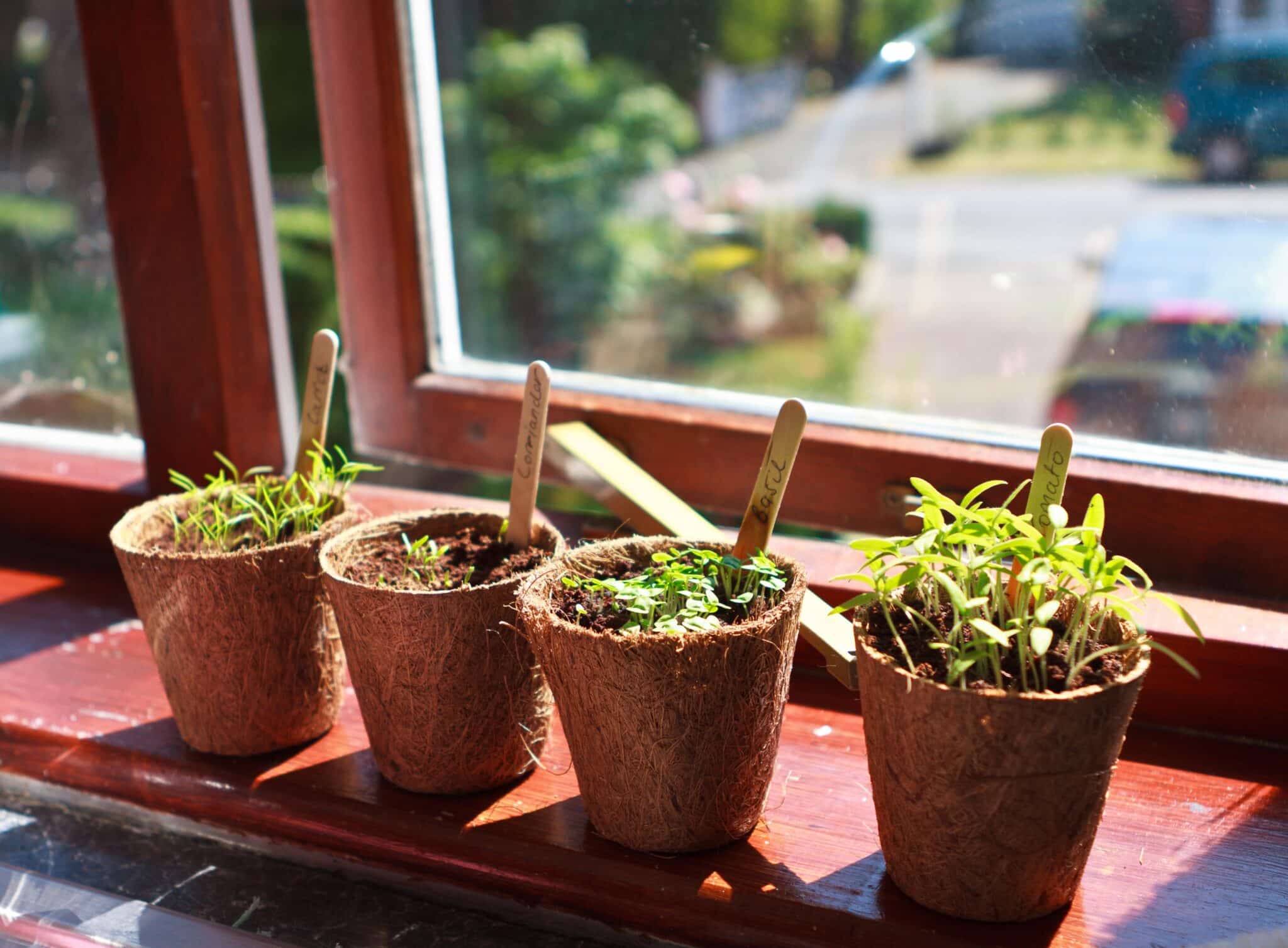

Pekic / E+ / Getty Images
If you’ve found yourself in the kitchen more than usual during the past year, you’re not alone. About 40% of American adults report that they are cooking more since the coronavirus struck, according to the U.S. Grocery Shopper Trends 2020 report. Demand for online food content and recipes has soared, and without lengthy commutes or social engagements, many adults have more time to experiment in the kitchen and make more of their own meals.
Food waste, however, remains a major problem in the United States; the USDA estimates that 30-40% our national food supply is wasted. Wasted food is the largest category of material in municipal landfills, and represents a major source of greenhouse gas emissions, thus having a substantial impact on global climate change. Without food waste, about 11% of all greenhouse gas emissions from the global food system would be eliminated, found the World Wildlife Foundation.
While global food waste can seem like a distant problem, individual homes represent the largest source of that waste in terms of dollars, resulting in major economic consequences for individuals and families. American households spend roughly $1,866 a year on food that ends up being wasted.
For both beginner cooks and seasoned chefs, these tips for creatively reducing food waste in your kitchen will both cut down on your environmental impact and save you money by keeping more food out of the trash.
1.Freeze leftover herbs.
If you find yourself with more fresh herbs than you can use, they don’t have to slowly wilt in the fridge until they’re beyond help: rosemary, thyme, cilantro, sage, basil, or whatever else you have on hand can be frozen for future use.
Make sure to thoroughly wash and dry the herbs, and prepare them the way you normally would before eating (stems removed, spoiled pieces discarded, etc.). Finely chop and press into each “cube” of an ice tray. Top them off with olive oil and freeze. Once solid, the cubes can be removed from the tray and stored in a freezer bag.
The cubes can be tossed directly into a pan for sautéing vegetables, or melted to dress a salad.
Even fresh ginger can be frozen – either shaved and stored in ice trays for individual servings, or peeled and frozen whole to be grated as needed.
2.Save leftover lemon peels for a homemade cleaning solution.

Pexels
If you use a lot of lemons for cooking or beverages, repurpose the rinds for an easy, organic surface cleaner.
After squeezing lemons for use, collect the rinds in a clean glass jar in the fridge, packing them tightly. Make sure to remove any stickers and thoroughly wash the lemons beforehand. Once full of peels, fill the jar with vinegar, cap it tightly, and keep in a dark, cool place (like the back of the fridge).
After about two weeks, your lemon-cleanser base should be ready. Strain the liquid through a piece of cheesecloth or a mesh strainer into another clean jar, discarding the peels.
In a spray bottle, combine the cleanser base with water in a 1:1 ratio, and it’s ready to go.
This organic surface cleaner is excellent for glass windows and mirrors, showers and sinks, countertops, and other surfaces. Since the mixture is very acidic, avoid using on marble or stone, as it might cause pitting on the surface.
3.Keep produce dirty.

Pexels
Extend the life of fruits and vegetables by refraining from washing until you’re ready to use them; too much moisture on produce can cause premature decay and send food to the trash. If you get a particularly dirty batch of potatoes or other fruits and veggies, you can still give them a good wash if they’re dried completely before being stored in the fridge.
4.Stock up on scraps.
Save veggie scraps in the freezer to make your own veggie stock. Not only will you keep peels out of the trash, but you’ll circumvent buying pre-made stock, which often comes in wasteful, non-recyclable packaging.
As you accumulate vegetable scraps – stalks, skins, stems, chopped-off tops and bottoms – add them to a Ziplock bag or Tupperware container in the freezer, where they can stay for up to six months. While peeling often eliminates the need for washing some foods, like potatoes, you’ll need to thoroughly wash any vegetables from which you plan to save scraps in order to avoid a muddy stock.
Once you have a decent amount of scraps, drop them in a pot and fill it with water. Bring the water to a boil and let simmer for 30-40 minutes, adding salt as needed. Strain the stock, making sure to remove any visible scraps.
The stock can be refrigerated for up to four days (or frozen for up to three months), and can be used in all of your favorite recipes calling for vegetable broth.
5.Rescue avocados from browning.

Pexels
Before stowing an avocado-half in the fridge, rub a few drops of lemon or lime juice on the exposed surface. The citric acid will slow down the browning process and your avocado will stay fresh for longer.
6.Revive limp kale.

Pexels
Kale and most other leafy greens like to be kept dry – a dish towel wrapped around the leaves and placed inside a produce bag should keep them fresh in the fridge; but, droopy kale isn’t a lost cause! Cut the edges of the stems and submerge in a few inches of water in a glass. Tuck them in the fridge for a few hours, and the leaves will perk right up.
7.Store smarter.
Storing produce more mindfully is an important way to extend the shelf life of your produce, and prevent tossing foods that have been gone bad.
Most importantly, keep foods that produce more ethylene gas away from those that don’t. Ethylene promotes ripening and can cause nearby foods to spoil – especially ethylene-sensitive foods, like leafy greens, eggplant, peppers, squash, and sweet potatoes. Ethylene-producing foods include apples, avocadoes, ripening bananas, mangoes, peaches, pears, plantains, and tomatoes. Storing these in a separate drawer will prevent your other groceries from rotting prematurely.
8.Grow your own herbs.

s0ulsurfing – Jason Swain / Moment / Getty Images
At most mainstream grocery stores, fresh herbs come pre-packaged in disposable plastic containers and in rather large quantities. When a recipe calls for only a dash of rosemary or a handful of chopped basil for serving, you might find yourself with more than you can realistically use.
Luckily, you don’t even need a backyard to have a beautiful, indoor herb garden. Many herbs will thrive in a pot on your windowsill, close at hand to pluck exactly the amount you need for a given recipe.
To grow sage, thyme, oregano and rosemary, look out for planter starters – a small piece of the plant that has already rooted and started growing – at a local hardware, grocery, or garden store. Herbs like dill, basil, parsley, and chives are easier to grow from seed, although purchasing starters can jumpstart the process.
Plant the starters or seeds in a well-draining pot, and water only when the soil is dry or the herbs are drooping. If you have a window sill that gets around 6 hours of indirect sunlight a day, great; if not, a small grow light can brighten up any corner of the house where you have space for growing.
9.First in, first out.

Pexels
When unloading your bags from the grocery store, don’t let the new items sit front and center. Bring older groceries to the front to encourage your household to eat these first. Designating a “use first” drawer will also remind you what to eat before breaking into the new stuff.
10.Get pickling.
https://www.youtube.com/watch?v=jJSaSyIHeEQ
If it’s becoming clear that you won’t get around to cooking with that red onion, try preserving it instead of tossing it in the trash.
Pickling is a great way to squeeze some extra life out of foods. Cucumbers, onions, cauliflower, beets, green beans, onions, and even fruit can be easily pickled for future use. By keeping some some vinegar, sugar, and salt on hand, you’ll be ready to prepare an easy brine in a pinch for preserving your produce.
Some easy pickling recipes even add extra spices and seasoning for a more flavorful product.
11.Blend up the extras.
When you find yourself with produce on the brink, whip up a “whatever smoothie,” adding anything you have on hand: overripe bananas, leftover stalks from leafy greens, wilting kale and spinach, or soon-to-be-spoiled produce that you just don’t know what to do with. This delicious, waste-free smoothie is an easy alternative to tossing your less-than-perfect produce.
12.Compost if you can.

svetikd / E+ / Getty Images
Composting is one of the most effective ways to divert food waste from landfills, where it decomposes and contributes to methane emissions: a harmful greenhouse gas accelerating climate change.
As composting becomes increasingly recognized as an important practice, practical (and cute!) indoor compost bins are widely available and fit right on a kitchen counter or tucked discreetly underneath. Be wary of what you toss in, avoiding meat, dairy, and greasy leftovers that harbor pathogens and give the compost a strong odor.
When it’s time to empty the bin, indoor and outdoor composting systems allow for the natural processes that break down food and create rich, organic fertilizer for lawns and gardens. If you have an outdoor space, maintaining your own backyard composting system is rather simple, with many different styles and options to fit your space. There are even excellent options for indoor composting if you don’t have access to a yard.
Many cities have developed large-scale municipal composting programs for residents – including San Francisco, Seattle, and Boulder – allowing city- and apartment-dwellers without their own outdoor space to compost. Even if your city doesn’t have a composting program, there are plenty of independent groups that might accept your scraps, including some community gardens and communal composting centers. Research what options exist in your area and consider how composting might work for you.
Remaining mindful of our food waste and incorporating some new habits are great first steps to lowering our environmental impact. As we spend more time at home – perhaps trying new dishes and making more home-cooked meals – we have the opportunity to develop patterns and practices that reduce our food waste and save both money and resources in the process.
Linnea graduated from Skidmore College in 2019 with a Bachelor’s degree in English and Environmental Studies, and now lives in Brooklyn, New York. Most recently, Linnea worked at Hunger Free America, and has interned with WHYY in Philadelphia, Saratoga Living Magazine, and the Sierra Club in Washington, DC. Linnea enjoys hiking and spending time outdoors, reading, practicing her German, and volunteering on farms and gardens and for environmental justice efforts in her community. Along with journalism, she is also an essayist and writer of creative nonfiction.
- 5 Best (Eco-Friendly) Meal Kit Delivery Services of 2021 - EcoWatch
- Concerned About Food Waste? Study Finds Meal Kits May Be ...
- Can the U.S. Slash Food Waste in Half in the Next Ten Years ...
- Total Amount of Global Food Waste Remains Unclear: UN Report - EcoWatch
- The Best Indoor Herb Gardens For Year-Round Gardening
- A Guide to Meyer Lemon Trees and How to Grow Them
- 6 Ways to Transform Your Lawn Into an Eco-Friendly Oasis
- This Simple Solution Will Keep Fruit Fresh for Longer - and Help Avoid Food Waste
- How to Compost in Your Apartment
- How to Compost in Your Apartment
- Recycling in the U.S. Is Failing, But These 7 Cities Are Doing Things Right
- 16 Recipes That Give New Life to Your Fruit and Veggie Scraps
- 9 Vegetables You Can Grow (Almost) Anywhere
- 5 Best Kitchen Compost Bins to Reduce Your Food Waste (2021)
- 12 Creative Ways to Use Citrus Peels
- 10 Ways to Save Water at Home - EcoWatch

 233k
233k  41k
41k  Subscribe
Subscribe 